On the Hunt for National Treasures With America’s Archive Detective
Mitch Yockelson scours the country for its missing heritage.
Mitch Yockelson knows what’s missing by heart. There’s an arsenal of diamond-encrusted daggers, swords, and scabbards gifted to Harry Truman by a Saudi prince and the Iranian shah—all stolen from his presidential library in 1978. There’s Franklin Delano Roosevelt’s official White House portrait. It went missing in a move. And there’s a batch of Abraham Lincoln’s telegrams that just up and vanished.
Yockelson, the investigative archivist for the U.S. National Archives, is unlikely to find any of these priceless historical treasures in a fluorescent-lit hall on the Maryland state fairgrounds. The annual Maryland Antique Arms Show brings together hundreds of dealers peddling all types of military antiques and ephemera. There, men toting bayonets for sale peruse table after table of old uniforms, yellowed discharge papers, and bowls of ammunition. Yockelson attends shows like this two or three times a year, in addition to scouring online auctions and following tips, on the hunt for lost Americana that rightfully belongs to the U.S. government.
Yockelson is one-half of the Archival Recovery Program, based in the National Archives and Records Administration’s office in College Park, Maryland. He and analyst Kellie Shipley believe they are the only dedicated team in any museum or cultural institution in the world whose sole purpose is to search for missing and stolen items. This hunt for documents and other objects that belong in the official repository of American history is what brought him to the military antiques show.
Yockelson is making the rounds, as he often does at such events—greeting old acquaintances and flipping through inventory binders—when he gets stopped near a display of old rifles. “Whatchu think you’re gonna find over here?” calls a white-haired man with a heavy drawl, approaching down the aisle.

“Whatever’s in your back pocket,” Yockelson fires back. He’s 56, with graying hair at his temples, a pear-shaped face, and the jacket-and-tie uniform of a career government employee. The man, a buyer named Jan who deals in military documents for private clients, seems eager to dish on old thefts and other dealers. He clearly knows why Yockelson is there.
“You get any of that stuff back that guy stole in the valley?” Jan asks. He’s referring to Howard Harner, who was convicted of stealing more than 100 Civil War–related documents from the National Archives in 2005, and whose case was a landmark in the creation of the Archival Recovery Program that Yockelson leads. Harner served two years in prison, but dozens of items he stole and then sold remain missing.
“We’re still looking,” Yockelson replies, wearily.
“You guys should’ve had him die in prison. Anybody to do what he did … it’s not only criminal, but he screwed so many people.”
“You know, buyer beware,” Yockelson says. “People didn’t ask questions. They took him for his word.”
When Yockelson first started attending these shows nearly a decade ago, he was almost always greeted with cold shoulders and dirty looks. “It’s not up to us to police the hobby for you,” the dealers—Jan included—told him. Some had lost money when stolen pieces they’d bought were reclaimed by the Archives, so many were wary of him snooping around their collections. Most documents, Yockelson muses as Jan wanders off, have been circulating for decades, so industry insiders are confident they’re clean. But when something new and exciting shows up, opportunity curdles into a kind of willful ignorance, and many “turn a blind eye” to its past, he says.
But now, through years of friendly banter and impeccable bona fides—he’s written several books on military history and is considered a foremost expert on World War I in particular—Yockelson has become a familiar presence, tolerated, respected, and even a little feared. His personal outreach is working: At least once a week a dealer calls him with a tip about a suspicious piece. Usually there’s not much to what they tell him, and in his head Yockelson still keeps that list, the one of items he dreams of returning to the National Archives.

Every Sunday night when he was a kid, Yockelson’s parents flipped on the television to watch The F.B.I., a show about fictional special agents solving real-life cases. He dreamed of joining the agency, and his mom brought him to the headquarters, where visitors were allowed to watch agents shoot at the firing range. Later, after he realized that a lot of Federal Bureau of Investigation cases involve white-collar crimes, Yockelson decided to pursue a Ph.D. in military science. He spent a couple summers in a Union Army uniform, regaling visitors to Virginia’s Petersburg National Battlefield with tales from the Civil War’s longest siege. As an intern at Harper’s Ferry, he edited the diary of a Civil War soldier. He came out of school with a doctorate in World War I military history and, in 1988, joined the National Archives as a research archivist. At the time, there was no recovery team.
Eight years later, a man named Harner befriended a Civil War specialist at the Archives, who helped him pursue his interest in Confederate generals who’d also served in the U.S. Army. On the side, Harner had been asking dealers what they were interested in buying—and then returned to the Archives to swipe the contents of those lists, mainly documents signed by military leaders such as George Pickett, Lewis Armistead, and others. He was caught when a researcher noticed that a document Harner had once viewed at the National Archives came up for sale on eBay. The case took a long time to wend its way through the legal system, but it was an alarm call, and helped launch the Archival Recovery Team in 2006.
Within a year Yockelson was transferred to the new unit as an investigator. At the Federal Law Enforcement Training Center in Georgia he learned basic investigation and interrogation techniques. He also learned how to read facial expressions to tell if someone is lying or withholding information. He’d put these skills to use later, when he sat in on interviews with suspects during criminal investigations. His presence, he found, put the certain type of thief who steals from archives at ease. “I’d go with criminal investigators. They’re armed, they have handcuffs, they look a certain part. Then there’s me, nerdy-looking and into history,” Yockelson says. “I would feel more comfortable talking to me. I can relate. I can talk the talk.”
In 2012, a French researcher named Antonin DeHays began visiting the Archives’ College Park research room, a bright space filled with researchers, authors, and historians sifting through the massive repository of U.S. history. On a pin-drop-quiet, window-filled floor, carts of records sit next to square desks, where visitors can examine and photograph historic items and documents, and scribble notes on borrowed paper. The materials DeHays asked for were popular by archival standards: the possessions of American pilots who’d been shot down by the Germans in World War II. In the boxes he was given, there were dog tags, letters from loved ones—even pedigree papers for a dog that waited in England for one airman’s return.
The file was often perused by researchers and historians, and later that year one had returned for a second look. He was confused by what he saw. The dog tags he’d previously photographed were missing.
Yockelson got a call from the research room and hoped that—like in many such cases—it was simply sloppy filing. He went downstairs and assembled a small group of archivists to look around. Not everything in the Archives is fully inventoried, but they were lucky: Both the staff and the U.S. Army agency for missing soldiers had recently been through the material, so Yockelson and his team pulled out spreadsheets and started checking boxes. For eight-hour days over the next few months, Yockelson and the staff tallied 300 missing items, mostly dog tags. They cross-referenced check-out slips and honed a list of people who’d requested the pillaged boxes. Then they set up a stakeout. Before a box went out, the staff would count the items inside, and then count them again after it was returned. On May 12, 2017, DeHays checked out a box for 24 minutes. When he gave it back, 30 dog tags were missing.
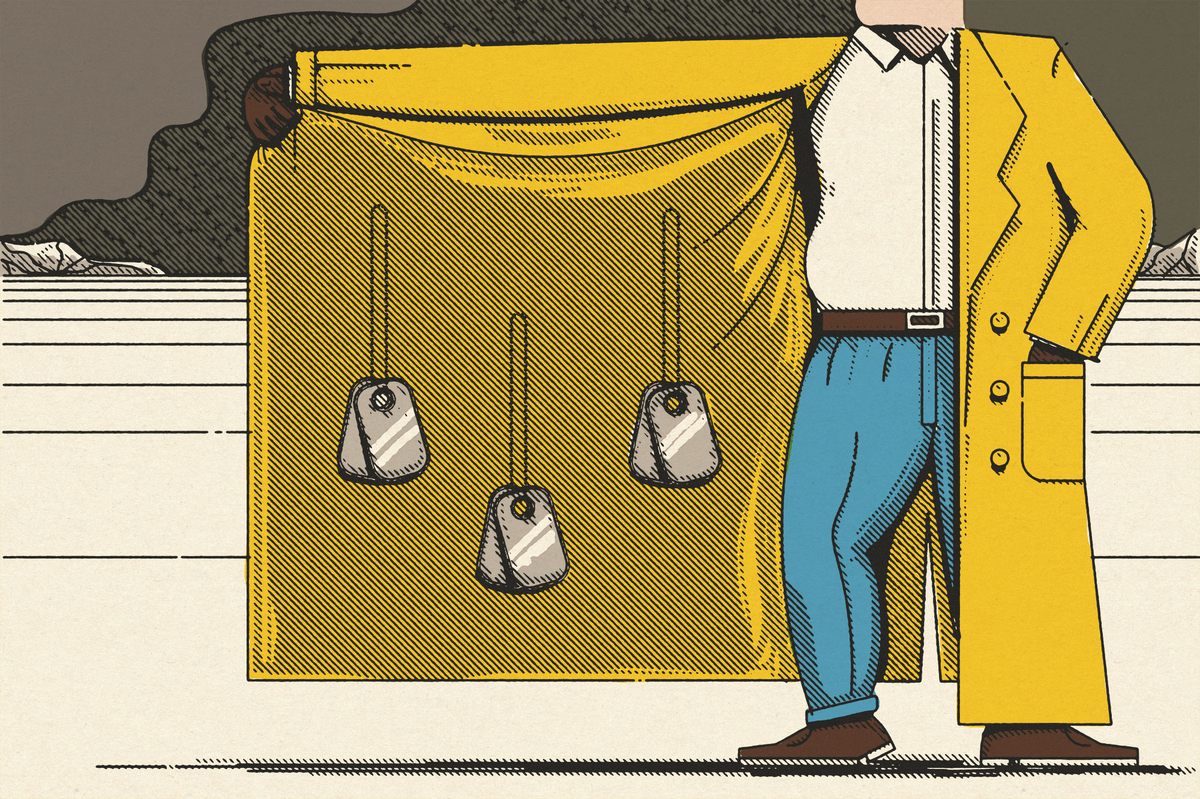
David Berry is one of the five federal agents assigned to the National Archives who collaborate with Yockelson on criminal investigations. After enough evidence was acquired, Berry sat DeHays down at a park near his house and showed him a search warrant. DeHays confessed immediately. He seemed exhausted, Berry says. After he was charged, DeHays, his attorney, Yockelson, and a U.S. attorney met. They wanted the whole story, but at that moment, Yockelson’s primary concern was the dog tags and how he was going to get them back. DeHays, who is from Normandy, had married an American woman and settled in Maryland. His plan, he said, was to make enough money to establish a World War II museum in his home region. He was polite, but seemed coached, and rarely elaborated on his answers. Yockelson pressed him on the whereabouts of the dog tags. He claimed he couldn’t say because he’d kept poor records.
Posing as a collector who wanted to downsize, DeHays had sold them on eBay and via word of mouth. More than two dozen buyers snapped up the rare pieces. One bought more than 100, with the intent of returning them to the airmen’s descendants and donating them to a museum, Berry says. Others went to DeHays’s acquaintances and network of collectors. In one instance he traded a dog tag to a private collector for the privilege of sitting in the cockpit of a Spitfire fighter plane.
“When people see something they want to buy they don’t ask too many questions,” says Berry.
In all, he’d stolen and sold nearly 300 dog tags and 136 other items, including pieces of aircraft and the airmen’s identification cards, from the government. Berry and Yockelson set to work. With DeHays’s cooperation (and computer history), the investigators tracked down buyers—some as far as away as Italy—and requested the artifacts’ return. Nearly every item was recovered. Only nine remain missing.
Once they started investigating, archivists discovered that another thief was working at the same time as DeHays. In June 2019, a member of the National Guard named Robert Rumsby was charged with stealing four World War II dog tags from the National Archives in 2015. He’d given two as gifts to the relatives of the dead soldiers’ families, he told reporters, and planned to do the same with the rest. His case goes to trial soon.
To those working it, the DeHays case felt personal—these items weren’t patents or pardons, but relics of young officers killed or taken prisoner. They also can be used to help locate and identify the remains of those still missing. In April 2018, a judge sentenced DeHays to 364 days in jail—just a day shy of mandatory deportation. Yockelson wishes he’d gotten a harsher sentence. “To me it’s as bad as committing capital murder,” he says. On his desk, Berry keeps a photo of Leonard Willette, a Tuskegee Airman who was killed in action over Germany. In the photo, Willette is wearing a set of dog tags DeHays stole decades later. It’s one of the sets he and Yockelson managed to recover.
Dog tags barely scratch the surface of what’s disappeared from the National Archives over the years. Interns, employees, outside researchers, and visitors have collectively stolen thousands of documents and artifacts since the agency was founded in 1934. Mismanagement, misfiling, and honest mistakes have done away with more.
The National Archives holds 10 billion pages of documents; 12 million maps, charts, and architectural and engineering drawings; 25 million photographs and graphics; 24 million aerial photographs; 300,000 reels of motion picture film; 400,000 video and sound recordings; and 133 terabytes of electronic data. Most are only available to view by those who can travel to headquarters in D.C., the facility in Maryland, or the country’s presidential libraries.
The security system, besides locks and metal detectors, is based on trust with a sprinkling of stern librarian oversight. In College Park, for example, researchers must get a special identification card in the lobby and lock up their bags—no notebooks or even puffy vests are allowed. The staff is quiet but omnipresent, whisper-enforcing a complex set of rules about what can be photographed, how to position the files, how many items can be on a table at a time. The feeling of surveillance is parental, and it seems as though any misstep will be spotted and corrected in hushed, direct tones.

Many of the thefts have been inside jobs. There was a time that staffers could leave the office without being checked. Take Leslie Waffen, a 40-year veteran of the National Archives, who walked out with 955 total items, including an original recording of the 1937 Hindenburg airship disaster. Today employees have their bags searched when they leave, but that doesn’t mean it’s impossible for them, or visitors, to get material out. “We’re not allowed to strip search people,” says Yockelson. “Someone like DeHays was able to sneak those dog tags in his pocket. Even if he was rattling on the way out, our guards don’t have the authority.”
The visitors—historians and hobbyists alike—almost always follow the rules, are thankful for the access the National Archives provides, and serve as watchdogs. Many are experts on their chosen subjects and have an intimate knowledge of the archival system—so they know right away if something looks amiss. They’re the Archives’ eyes and ears.
In cases of theft, some culprits are in it for the money. But most start with a genuine love of history. Yockelson says that many who steal do so because they have grown obsessed with their own knowledge and sense of stewardship. “They think, either, ‘I can take better care of this,’ or, ‘This belongs to me more than it does anyone else.’” Sometimes their collecting develops into obsessive hoarding. DeHays told Berry that stealing had become like an addiction. “I think by and large they’re ashamed and embarrassed,” says Berry—once they’re caught, at least. “It’s sad because their role is to be caretakers to history, and that must be very hard to live with.”
In their College Park office, Yockelson and the analyst Shipley sift through internet dumps of keyword searches of eBay and auction houses every day. The items they’re looking for often have markings, such as index numbers, to indicate their origin. The researchers don’t expect much outside help. Yockelson gets those tips, but no auction house has ever called to ask about the origins of an item, and no dealer has volunteered to return a suspect item they already possess. Shipley has a saved search for every known missing item. It’s fishing, but sometimes she gets a bite. A few years ago a wealthy collector died and a number of signed presidential pardons he had purchased appeared for sale at an auction house. Likely unbeknownst to him, they’d been stolen from the National Archives. In recent memory, Shipley has turned up Civil War letters, World War II submarine plans, and mugshots from the United States Penitentiary in Leavenworth, Kansas.
The government has the legal authority to confiscate a piece even if they didn’t realize it was missing. “The bottom line is we’ve been victimized and want our stuff back,” says Yockelson. This authority is one reason for the cold welcome Yockelson received when he started visiting military memorabilia shows.
Dealers understand this risk and know that not everything they buy can be guaranteed clean. Some of them certainly want to stay ahead of the game and in the good graces of Yockelson and the government. Bill Panagopulos, who runs Alexander Historical Auctions in Maryland, has helped recover a handful of objects for the National Archives, including a handwritten order from Abraham Lincoln to post a chaplain at a Civil War–era hospital. “It could happen at any time,” Panagopulos says, of the chance something stolen will appear in one of his catalogs. “Some of this stuff has been through five hands since it was stolen 50 to 60 years ago.” Sometimes, before taking a consignment he’s unsure of, Panagopulos calls Yockelson to confirm that the item doesn’t belong to the government.
The objects Yockelson really wants back—those he knows the history of by heart—are persistent phantoms. There’s the bombing target maps for Hiroshima and Nagasaki, used by crew members of the 20th Air Force to guide their mission, which disappeared after being loaned to a public relations officer in the Air Force in the 1960s, probably for a presentation or article. No one noticed they were gone until a staff member went looking for the file 40 years later. Yockelson doesn’t think there’s much chance of finding them. But sometimes those phantoms do reappear.
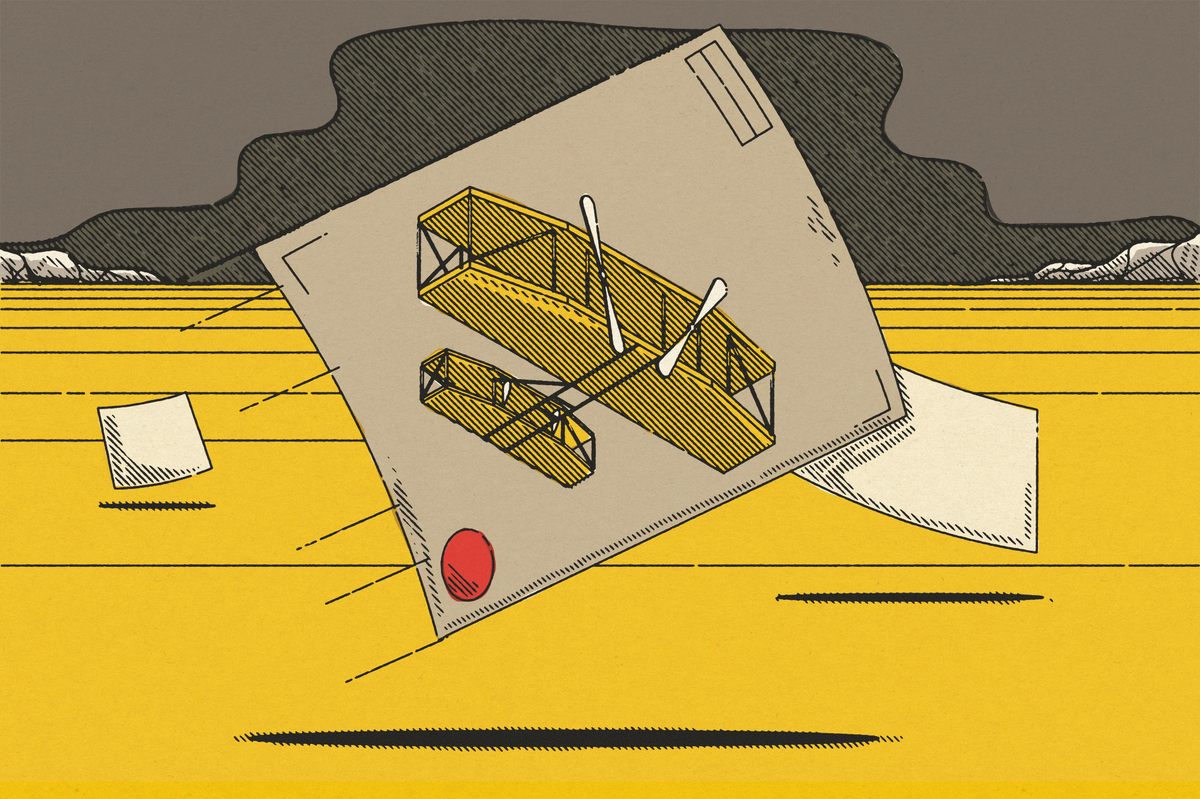
In 2003, the National Archives was preparing to celebrate the centennial of the Wright Brothers’ first heavier-than-air flight in the dunes of North Carolina, and someone wanted to pull the flying machine patent for display. Records show it had been loaned to the Smithsonian in 1979 and then returned, but it was not where it was supposed to be, and the trail had gone cold. It bothered Yockelson to no end. He thought about it every time he boarded a plane.
After nearly a decade, a staffer offered a novel idea during a cold-case brainstorm. Could the historic patent have been grouped with another patent file in Kansas, where an underground system of former limestone mines holds millions of overflow items? They called the office to check, and an archivist there began to search a 15-foot-high stack of boxes. Soon a call came back to College Park: Inside a manila envelope, mistakenly filed with a different Wright Brothers patent, was what they were looking for. Yockelson was ecstatic. It was by far the most exciting missing item to find its way back to the National Archives. When it arrived in their conservation lab in 2016, he went to look at it. He’d never thought he’d see it—he never even knew exactly what it looked like—and there it was. “Where have you been all my life?” he wondered. In a cave in Kansas, apparently.

Here I just have a few stolen government documents you might be interested in,” jokes a dealer with a New Jersey drawl. He’s presiding over a couple binders of antique papers and ephemera at the front of the Maryland military show. A stand next to him is roasting nuts, so the joke comes with a caramelized perfume.
“Not today,” Yockelson shoots back.
The two get to talking about what’s out there: fake Nazi artifacts circulating on eBay, genuine documents of opaque origin, and the lies dealers concoct to give their wares a good story. There’s little protection for the consumer, or responsibility on the seller. The market that Yockelson is always watching is nearly impossible to police. “I saw you at the Gettysburg show standing next to Cal’s table,” the dealer says. “I saw the expression on his face. Cal looked like he was ready to say, ‘Just cuff me up.’”
But it’s not that easy. A new case or find brings a fresh historical scavenger hunt for proof that the item should be returned to the National Archives. “On each theft we have to start from scratch: Did it come from us? How can we identify that we actually had it?” Yockelson says.
He admits they need to exercise better control over their holdings. Digitization is one solution. Over the next five years, the National Archives plans to digitize 500 million pages of records, on top of the 235 million that are already available electronically. The entire collection of the Barack Obama Presidential Library in Chicago will be digitized when construction is finished in 2021. As a result, no one will be able to abscond with the original pieces of history, but will those digitized files—so easy and accessible—hold the same appeal? A box of documents, touched by their original owners, is personal. And bringing them out to be touched again grants them a second life.
Yockelson looks glum as he imagines boxes of military dog tags, presidential pardons, and yellowing letters gathering dust in storage, even if it ensures their safety and even if they remain available to researchers in another form. “We want people to use our holdings,” he says. “That’s why we exist. Just don’t take the stuff while you’re here.”
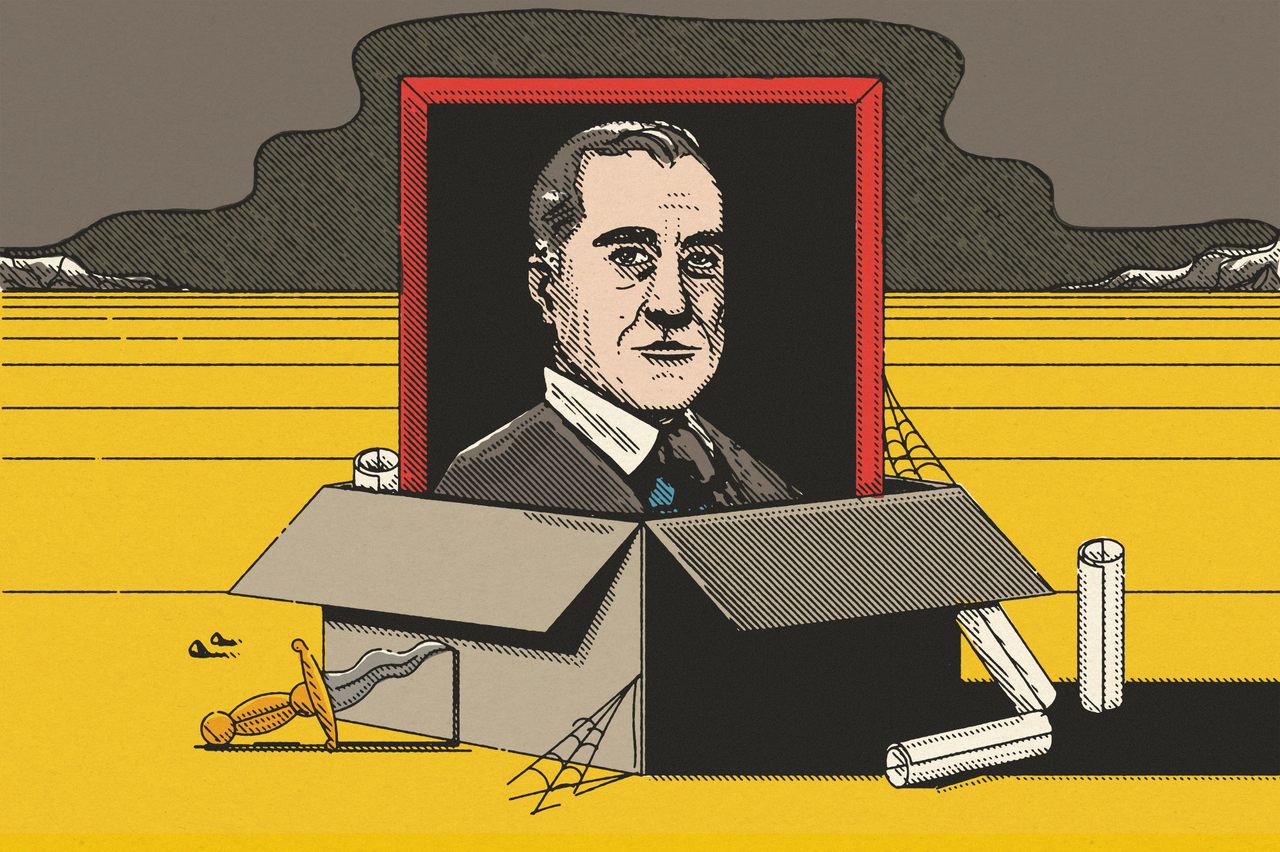
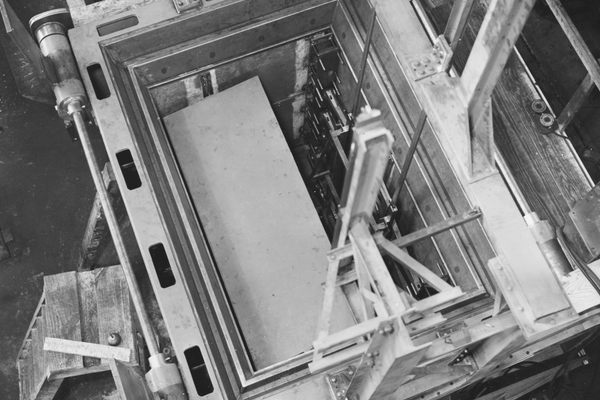


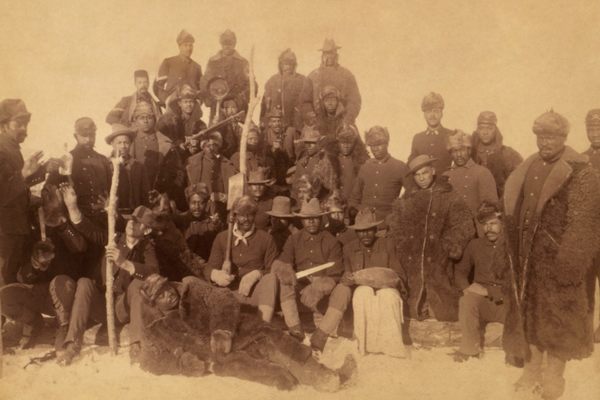
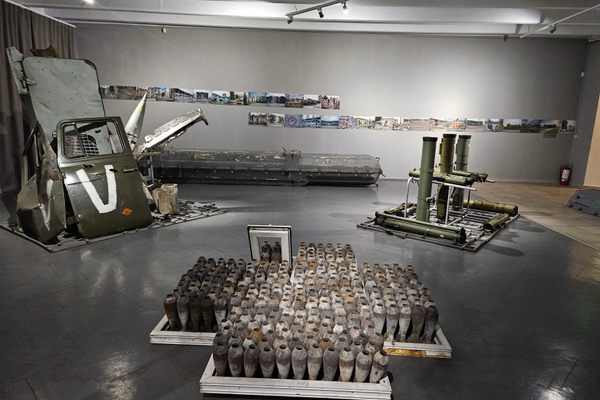


















Follow us on Twitter to get the latest on the world's hidden wonders.
Like us on Facebook to get the latest on the world's hidden wonders.
Follow us on Twitter Like us on Facebook